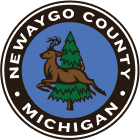Are you ready?
Do members of your family know the safest and most dangerous places in your home? Do they know where to meet if they become separated? Do you have emergency store of water or other emergency supplies?
Unfortunately, disasters can happen at any time and they can be overwhelming for all involved: victims, neighbors and first responders. Families can improve their safety and chances for survival by preparing before emergencies occur. By working with your family to create a Family Preparedness Plan you will reduce the level of stress in an emergency and increase your chance of survival in a disaster. It will be time well spent with your loved ones and could one day save your life and that of your families.
Consider these recommendations when you develop or update your Family Preparedness Plan. Remember: These are only suggestions for preparing your family. You should use good judgment and common sense when making your preparations.
EDUCATE YOURSELF AND YOUR FAMILY
- Learn what disasters may strike your area (e.g., flood, fire, tornado, ice storm)
- Learn what hazards are located in your area (e.g., dams, chemical plants, bridges)
- Learn where your evacuation shelters are located
- Learn your community’s primary and secondary evacuation routes
- Learn the disaster plan at your place of work or school
- Learn the disaster plan at your child’s school, including how the school plans to reunite children and families if a disaster strikes during school hours.
CREATE A FAMILY EMERGENCY PLAN
- Have a family meeting to create an emergency plan
- Make sure everyone in your family knows the plan
- Identify two different routes to get out of the house in case you must evacuate
- Identify safe places in your home in case you must stay inside
- Identify meeting places for your family in case all of you are not in your home at the time of disaster
-Pick one place in your neighborhood
-Pick one place outside of your neighborhood
- Identify a family contact person (neighbor, friend, or relative) who the members of your family can contact in case of separation
- Identify an out of state contact person
- Write these contact names and phone numbers on your Family Preparedness Card and place copies in your emergency kit
- Make a plan to keep your pets safe
- Make an emergency kit for your home, car, and workplace
- Know how to turn off electricity, gas, and water
HAVE A FAMILY COMMUNICATION PLAN
- Fill out and carry family contact emergency numbers in your wallet, backpack or purse
- Make sure family members know important phone numbers. These can include: School, Afterschool Care, Child’s Cell Phone, Family/Work Cell Phone, Relative/Friend, Out of State Emergency Contact, Doctor, Hospital, Insurance, Fire, Police Information (non-emergency numbers – use 911 only in life-threatening emergencies), Pharmacy, Mental Health Agency, Veterinarian, Local Red Cross, Highway Road Conditions
PUT TOGETHER AN EMERGENCY KIT
- Think Ahead. Your family needs supplies to last at least three days. Pack them in containers that are easy to carry. You may need more than one kit if you have a large family. Store your supply kits in a secure place.
- Food and Water. Have a gallon of water per person for each day. Pack foodstuffs that will not spoil and do not need to be cooked. For canned products, have a hand-operated can opener. Include baby food if needed, and food and water for any pets.
- Blankets or sleeping bags. Have one warm blanket for each member of the family.
- Include a flashlight and extra batteries in your kit. Have a portable radio, with extra batteries. Include a wrench to turn off gas, water, and a fire extinguisher.
- First-aid Kit. Pack a first-aid kit, including any prescription medications that your family needs. Include an extra pair of glasses for family members with prescription lenses.
- Sanitation supplies. Have toilet paper or tissues, feminine products, wipes, and anti-bacterial hand gels. Consider plastic trash bags for used food containers and other items such as dirty diapers.
- Personal items. Be sure to have an extra set of car and house keys. Have a credit card and cash. Have copies of important family documents (passports, social security cards, insurance information, etc.) in the kit.
- In the event of an emergency, you may be staying in a shelter for several days, so pack a book, playing cards, or a pad with crayons or pencils.
- Plan for family members that have special needs, including:
-Children
-Seniors
-People with disabilities
-Individuals who speak little or no English
-Individuals who take special medications
-Pets
BE INFORMED
During and after an emergency, stay informed about up-to-the-minute risk and safety information (e.g., hazardous conditions, school closings, updated evacuation plans) on radio, television, and hotline telephone numbers.
- Learn how to prepare you and your family by signing up for the Newaygo County CERT program or call your local Red Cross chapter to ask about first aid, CPR or disaster training.
- Learn how local authorities will notify the public during a disaster.
PRACTICE
Your Family Preparedness Plan will not work unless you practice it with all members of your family.
- Every six months:
-Update and refresh your emergency supply kit
-Review your disaster plan with the whole family
- Once a year:
-Practice your family emergency plan
-Update family emergency contact information
-Check your fire extinguisher
DO ONE THING
Being prepared for disasters and emergencies can seem like a big job. Many people don’t know where to start, so they never start at all. With Do 1 Thing you can take small steps that make a big difference in an emergency.
Do 1 Thing is a 12-month program that makes it easy for you to prepare yourself, your family, and your community for emergencies or disasters.



